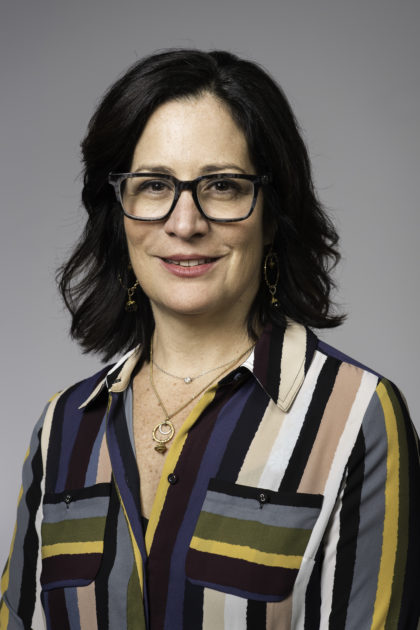Since March, the University of Rochester has been operating in an all-hands-on-deck fashion to respond and adjust to the circumstances created by the COVID-19 pandemic. The Coronavirus University Response Team (CURT) has been at the center of the efforts.

Joan Saab, vice provost of academic affairs and Susan B. Anthony Professor of Art History and Visual and Cultural Studies, is among the CURT members providing holistic guidance and strategy for the University’s nonclinical recovery operations and for the school and unit planning and redesign.
Saab also chairs the Committee on Academic Practices (CAP), which has become an arm of CURT. The coronavirus outbreak dictated that CAP shift its focus from discussing policy to how the University will overcome the academic challenges it faced in the last semester and those it will face in the fall.
Maybe the biggest topic: online education.
Saab would be quick to tell anyone that how the University completed the spring semester is not a good example of what online education generally looks like. Think of it this way—Imagine the University faculty had to ski down a mountain, only they didn’t have skis; they had ski-like objects, like two-by-fours. In that situation, it’s not about skiing as much as making it to the end of the trail. The University’s transition to remote learning was an emergency pivot that enabled students to complete their courses
“We were responding to the circumstances,” says Saab. “For the most part, the classes being taught were not designed to be taught online. There is a big difference between having an online class and taking a class online.”
Now that many professors will be taking a more intentional approach to online learning, and CAP is helping faculty members think about and facilitate the shift.
In terms of accessibility, do faculty members and students have everything they need to teach and learn?
It’s hard to say because this is relatively new at this scale. I think it is going to evolve from semester to semester. We surveyed the students. We surveyed the faculty. We are still assessing the situation and doing what we can to make sure the faculty has what it needs, but in many cases, we don’t know exactly what it is they need yet.
Coronavirus update
The University’s website is a way to find guidance and critical information during a rapidly changing situation.
However, a few quick things come to mind. We are asking that all faculty use Blackboard. We’re also looking into how to best accommodate students who are deaf or non-native speakers who may have difficulty understanding professors through their masks. There are some clear masks and we are working on getting them for all who may need them.
How can we address some of the accessibility issues through technology and “smart” classrooms?
We’re equipping our classrooms with special mics and speakers that will enable better teaching over Zoom. We are also providing studio spaces for faculty to teach in without anyone else around, and hosting a number of workshops and training sessions for instructors that introduce and explain the technology and tools are available. Our online education office—in particular Eric Fredericksen (associate vice president for online learning) and Lisa Brown (associate director of University IT), as well as Emily Sherwood (director of the Digital Scholarship lab) and her team—has been working overtime. There are a lot of great tools out there.
For example, there’s archiving software in the library called Omeka, which allows you to do really cool things with objects online. We have digital video capture tools that allow you to stream movies and annotate films. And then there are low-tech options, like WordPress, which faculty can use to set up websites for working on projects. We’re trying to highlight the things that some of our faculty have already done because some faculty don’t know all the options.
Are there alternatives to traditional content delivery that we should be exploring?
If you look at big lectures with 150 students or so with the professor at the lectern—who may not know all the students by name—in some ways, we might see that as a type of distance learning. It can be a wonderful and powerful experience, and some faculty are great at delivering material in that way. At other times, though, I think it is fair to say that large lecture courses can feel impersonal for students.
Might there be useful alternatives in those situations? I think there are, at least for those interested in those alternatives. For those faculty who are interested, I think this is an opportunity to rethink how we deliver course material and work through key ideas and questions.
There’s some discussion about having outdoor classrooms, having prerecorded classes, and splitting large classes into smaller groups. One of the things that I’m personally planning on doing is teaching in micro-units where the material can be delivered in multiple formats. Technology is just one aspect of teaching. We have to be creative and flexible.
Read more
Joan Saab, the Susan B. Anthony Professor and chair of the Department of Art and Art History in the School of Arts & Sciences, was named vice provost of academic affairs in 2018.
As graduating students navigated remote learning, social distance, and a virtual degree conferral, they still managed to find perspective on their time at Rochester.
Rochester biology professors Dragony Fu and Alexis Stein have adapted a 250-plus-student class—including a lab—to Zoom.



